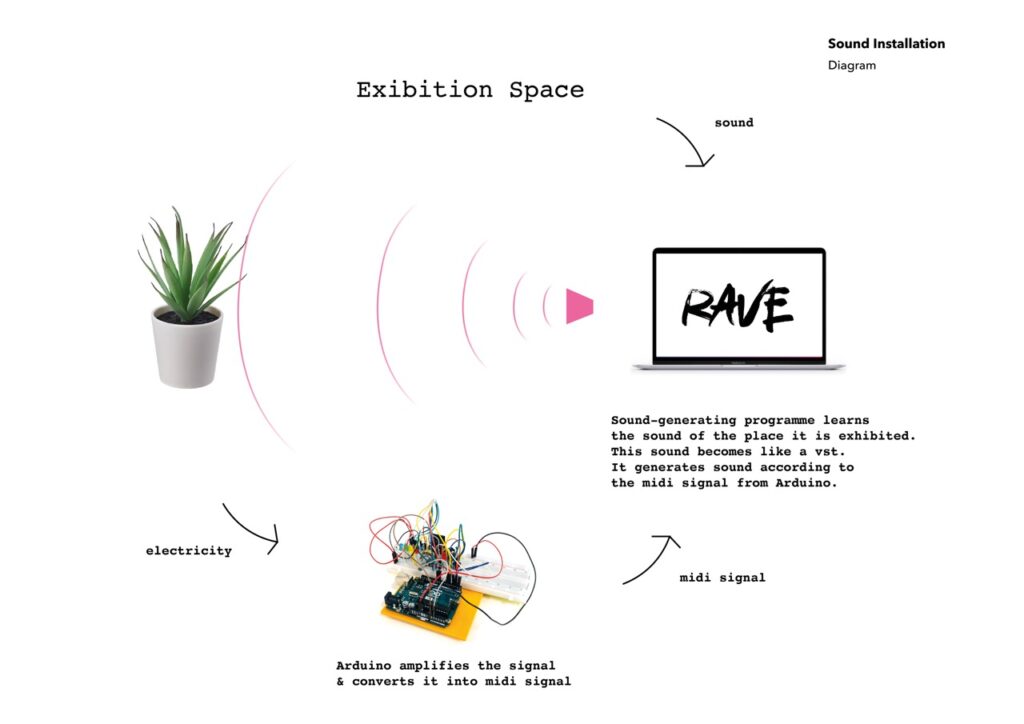Rethinking the human-nonhuman relationship
Rethinking all the entities and the constitution of the world
This project started from the concern about the climate crisis we are facing. To explore alternative ways of being/thinking in this circumstance, I’ve been reading some books by Bruno Latour, Donna Haraway and New Materialism thinkers. I’ve resonated with the idea of challenging anthropocentric and colonial divisions such as “subject and object” or “culture and nature” and the conceptual framework that encourages viewing the world as a network of entangled relationships between all entities. The notion of ‘intra-action’ coined by Karen Barad provided the fundamental basis to liberate me from anthropocentric thinking by seeing the ontological and epistemological meaning of all the entities and the constitution of the world differently.
The notion of intra-action is a key element of my agential realist frame-work. The neologism “intra-action” signifies the mutual constitution of entangled agencies. That is, in contrast to the usual “interaction,” which assumes that there are separate individual agencies that precede their interaction, the notion of intra-action recognizes that distinct agencies do not precede, but rather emerge through, their intra-action. It is important to note that the
“distinct” agencies are only distinct in a relational, not an absolute, sense, that is, agencies are only distinct in relation to their mutual entanglement; they don’t exist as individual elements.Karen Michelle Barad, Meeting the Universe Halfway: Quantum Physics and the Entanglement of Matter and Meaning (Durham: Duke University Press, 2007), p. 33.
I wanted to present my realisation of ‘intra-action’ by focusing on these two points.
✦ Setting a nonhuman as the “actor(subject)” and emphasise its liveness
✦ Addressing the “emerging agencies”
In choosing the best material to deliver this idea, I considered an interactive installation in which a live nonhuman is actively involved.
So the initial idea was, like in this diagram, to make a sound installation that makes the recurring interaction between entities hearable. The electronic current in a plant modifies the sound of the space and lets the audience hear in real-time. In other words, the plant responds to the surrounding auditory stimuli through the sound of the space.

Electric signals from a plant were converted as midi signals through Arduino. Here is the Arduino instruction: GitHub(https://github.com/electricityforprogress/BiodataSonificationBreadboardKit/tree/master). In the following video, I used software instruments in Logic X to make the midi signal hearable.

However, it was not possible with current technology to make a real-time learning sound model. So I’ve changed my original plan in a way to use a pre-trained sound model. Since I am a fan of blues music, I could connect the concept of ‘call and response’ in blues music to the intra-action. The characteristic of improvisation in blues is similar to the concept of “emerging agencies” in the process of intra-action.
In the Max/MSP patch, I’ve used ‘nn~’ object which enables to use RAVE: Realtime Audio Variational autoEncoder. The guitar sound model was downloaded from Hugging Face(https://huggingface.co/Intelligent-Instruments-Lab/rave-models).
In the video below, the Max patch is showing; a backing track, a solo instrument track, random elements(lines) connected to midi signals in nn~, midi information, and a system of taking turns playing.